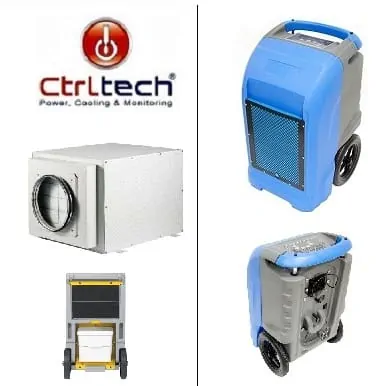commercial dehumidifier, dehumidification, Dehumidifier, humidity, industrial dehumidification, Industrial dehumidifier
Industrial dehumidification system applications.
In this article, we will explore different applications of the dehumidification system. Industrial dehumidification needs a heavy-duty dehumidifier. For example, for drying large warehouses, we need a unit with high capacity and airflow. A dehumidifier helps to complete industrial processes. Also, it helps to maintain the quality of the end product.
This article is for the commercial use of dehumidifiers. Besides, we will discuss how to send the right model for your application. Every site demands certain features that a dehumidifier should have. Hence, the user needs to make sure that the unit has those features. Of course, by keeping the budget in mind.
Table of contents
How to select an industrial dehumidification system?
First, we need to collect site data. Second, we need to shortlist features that the unit must-have. Every site is different. Hence, we need to pay attention to every detail. In other words, we should not skip any source of humidity. All moisture-generating sources should account for industrial dehumidification calculation. In the same vein, we need to make a list of features keeping the budget in mind.
Industrial dehumidification site study.

During the site study, we need to note down the current humidity level. Also, check the lowest setting of the air conditioner. To decide the required humidity, we need to understand what job is going to do inside that room. For instance, an archive room needs the lowest moisture possible. So, we can consider the required humidity of 30% RH for the dehumidification system sizing. But, if the room is to store electronics, then we can consider 50% RH.
In short, we need to understand the process. It recommended checking humidity need from an expert in that field. Find out the amount of fresh air pushed in the room, if any. Check if there are any air leakages. Please note, if the space is airtight, then drying will be faster.
Note down how many peoples are working and the size of the door. The frequency of the door opening is also important. Find out if there is water involved in the process. If yes, then check if it is hot or cold. These factors will help to reach the right size industrial dehumidification unit.
Dehumidification system features.
Consider the following points while selecting an industrial dehumidifier.
- These units subject to rough use. Thus, the casing of the machine should be robots.
- Similarly, it exposes to all weather conditions. So the body should be rust resistive.
- The industrial dehumidification unit should have a wide operating temperature.
- It should have the facility to set required humidity and fan speed.
- To save energy, it should have an automatic operation. Which means it should stop itself when humidity reduces to a set level. Also, it should start itself when moisture increases more than the set level.
- A portable unit should have durable pneumatic type wheels. And, a handle for smooth movement.
- Other than a pump, it should have an internal tank too.
Industrial dehumidification applications.
Dehumidifiers used in many industries. It always adds value to processes. Some of the applications are as follow:
Food industry.
In the food industry, always a low humidity desired during production and in the storage area. A high humid condition in the food storage area can cause mold and fungi. As an example, warehouse storing pulses or dry fruits. Low moisture is crucial for maintaining the quality of food. Also, in chocolate industries and bakeries required dryness.
Hence, the food industry needs a dehumidification system.
Museum & Archive Room.
Museum and archive rooms store high-value material. It stores books, paintings, and statues. Thus, high humid air in a museum and archive rooms can destroy artifacts. Or, it damages it beyond repair. Especially for books and paintings, low humidity as much as 20% is desirable. High moisture in the old car museum can cause rust on metal parts.

Equipment rooms.
Many types of equipment are sensitive to high humidity. Especially, machines consisting of electronics desired to store in low humidity areas. High moisture in the plant room can cause rusting on costly equipment. Likewise, humid air in the telecom room or datacentre can cause a server breakdown. If manufactures of machines suggest, then use the industrial dehumidification unit.
Marine dehumidification system.
Due to proximity to seawater, high humidity observed in the marine industry. Ports and ships always face issues due to moisture. Therefore, humidity can cause rust in mechanical equipment. Also, it can malfunction electronics in boats. It is vital to control humidity in the control dock of the ship. A standard marine dehumidifier should fix in the control room of the vessel.
Cold Room Storage.
Condensation is a common problem in cold storage rooms. Inside cold rooms, air freeze at zero degrees celsius. Hence, moisture inside the cold room gets condensed. Water due to condensation can damage material inside the room. Thus, a desiccant dehumidification system should install a cold room.
Some of the other applications.
Some of the other Applications of Industrial dehumidifiers are as follow:
- Due to its reliability, it is ideal for defense equipment storage.
- It used in factories like breweries, candy, chocolate, and leatherwork.
- Chemicals are subtle to moisture. Hence, compost and battery plants need a dehumidifier.
- Cleanroom, labs, library, and vessel painting need dry space.
- Rusting can kill machines. Thus, pumping stations need industrial dehumidification.
- Wood, seed, and ship drying need these units.

